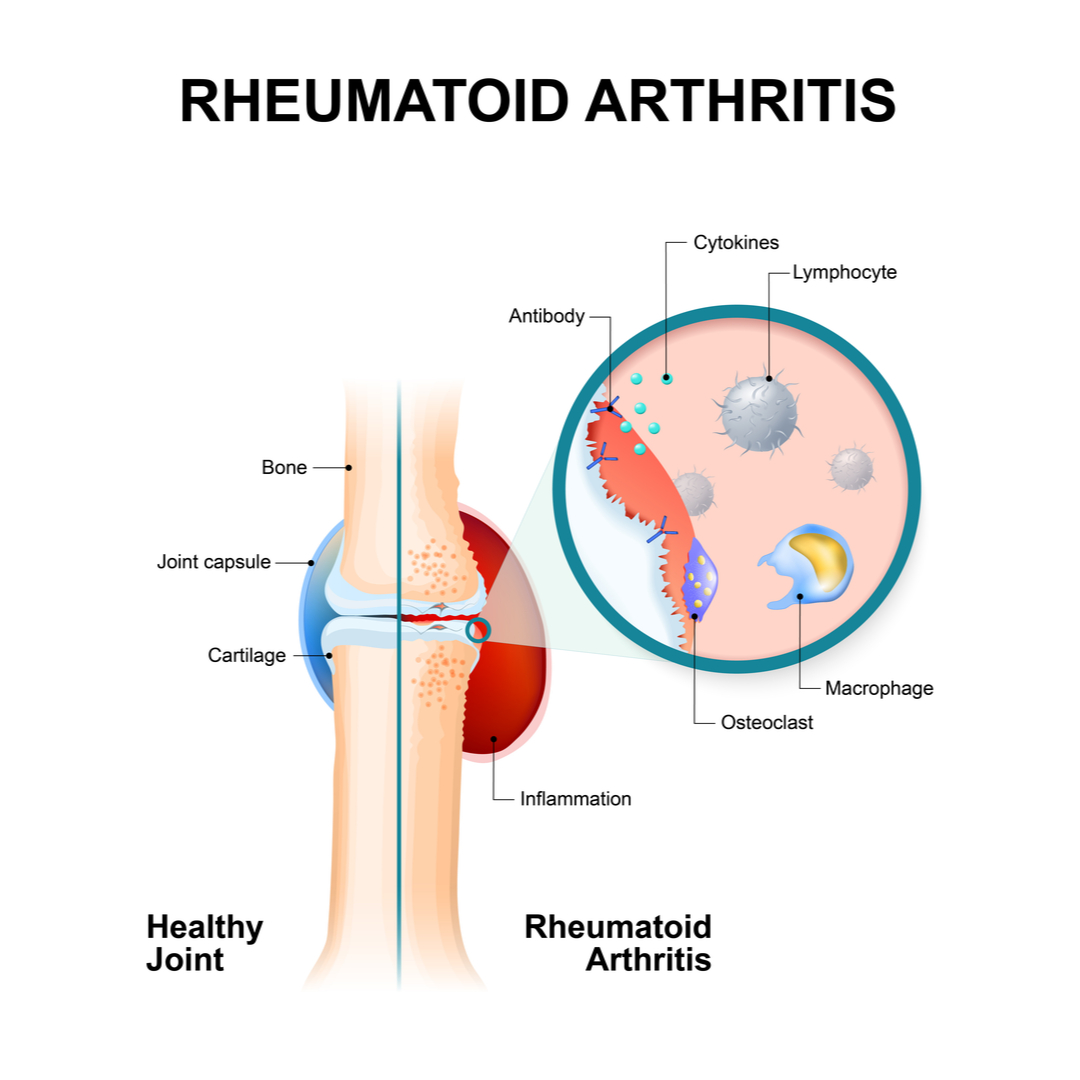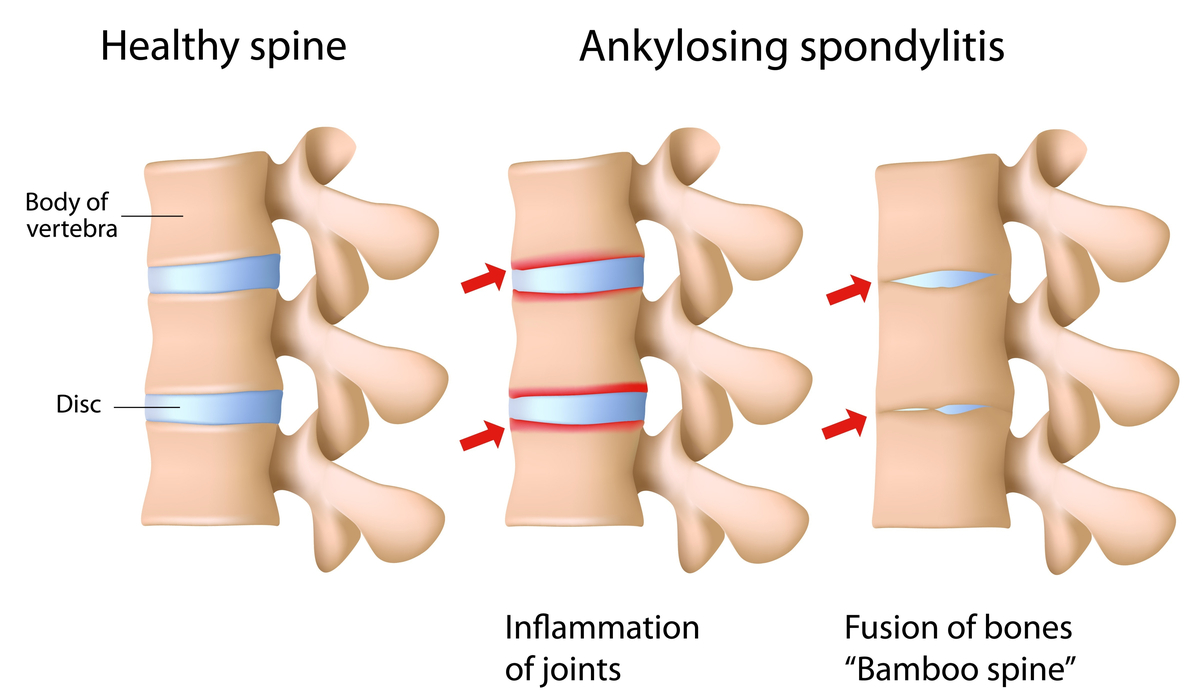Fortunately, there are many options to choose from to treat your arthritis and avoid everyday joint pain. To learn more about the most common types of arthritis and treatment methods that you can try out, keep reading.
The Most Common Types of Arthritis
Arthritis affects over 50 million adults and approximately 300,000 children in America. Arthritis, while more common in older adults, can be present in any kind of person. People of any age, sex, and race can develop arthritis.
Arthritis also cannot be reversed, meaning that treatment options for joint pain and inflammation are more tailored toward pain management over curing the problem. Arthritis symptoms can slow down, preventing the joints from being destroyed, but only if it’s caught early.
1. Osteoarthritis
Osteoarthritis (OA) is the most common form of arthritis. In fact, more people have OA than any other form of arthritis. It’s also referred to as degenerative arthritis because it causes the cartilage that protects your bones to break down.
When this happens, the affected joint becomes inflamed and painful. It can cause easier injury to the bone, and bone spurs may form. OA will often affect only one or two joints, only one side of the body.
If you’re older, have a family history of OA, overuse your joints, or are obese, you’ll have a higher risk factor for developing OA. To diagnose OA, your doctor will look at your medical history and do an exam followed by imagining tests to look at your joints.
2. Rheumatoid Arthritis

Rheumatoid arthritis (RA) is an autoimmune disorder that causes your body to attack your joint tissue instead of foreign intruders like it’s supposed to. RA can be easily distinguished from OA because it’s symmetrical, meaning if you have joint pain in one joint on one side of your body, you likely have damage in the other one as well.
RA is often diagnosed alongside Sjogren’s syndrome, which will add dry eyes and mouth to your symptom list. RA is also three times more common amongst females. While OA causes swelling and inflammation, you’re more likely to experience a burning or tingling sensation with RA.
3. Psoriatic Arthritis
Psoriatic arthritis (PsA) is common in psoriasis, with about 30% of people who have psoriasis. PsA mostly affects one’s fingers and spine, causing swelling and rashes along your skin.
4. Gout
When urate crystals form within your joints, you can develop gout. Gout is pretty rare, only affecting about 3.9% of American adults. Unlike most types of arthritis, gout tends to mainly attack the feet, causing burning, tingling sensations in the toes that can be extremely unpleasant.
Gout is different from other types of arthritis because it causes sudden and sharp pain when it flares up, sometimes enough to wake you up at night, while other arthritis pain tends to be more achy and dull.
5. Lupus
Lupus or systemic lupus erythematosus (SLE) is similar to RA, as it’s an autoimmune disorder that causes your body to attack itself when it shouldn’t. However, lupus targets your connective tissue and can severely damage your organs, such as the lungs, kidneys, heart, and brain—while RA mainly targets the joints.
Common symptoms associated with lupus include:
- Chest pain
- Fatigue
- Hair loss
- Mouth sores
- Skin rash
- Fever
- Sunlight sensitivity
- Swollen lymph nodes
6. Juvenile Arthritis
Contrary to popular belief, children can develop arthritis as well. When children experience joint pain, it’s referred to as juvenile arthritis, an umbrella term for the multiple types of arthritis that children can experience.
Juvenile arthritis occurs in children that are under the age of sixteen. Because they’re so young and their bodies are still developing, arthritis can cause many problems, such as:
- Eroded bones
- Tightened muscles and soft tissue
- Changes in growth patterns
- Misaligned joints
If your child experiences long-term swelling, joint pain, stiffness, fever, and fatigue, they may have juvenile arthritis.
7. Fibromyalgia
Fibromyalgia is a condition that causes your brain to incorrectly process pain that occurs in your joints. Basically, your brain tricks you into believing that the pain that you’re experiencing is more painful, causing it to actually become more painful.
8. Ankylosing Spondylitis

Ankylosing spondylitis (AS) is a kind of arthritis that mainly affects one’s spine. It causes the vertebrae to be severely inflamed and often leads to chronic pain or disability. AS may cause new bones to grow on the spine, leading to potential deformity.
While it mainly targets your spine, it can also cause joint pain in other parts of the body, such as the hips, shoulders, and knees. With AS you can expect poor posture, low appetite, anemia, weight loss, and fatigue.
9. Infectious Arthritis
Infectious arthritis occurs when there’s an infection in a joint that’s causing it to swell up. These infections can be caused by various issues, like bacteria, viruses, parasites, and fungi. It may spread to other parts of your body and cause you to gain a fever or chills.
10. Reactive Arthritis
When your body triggers an immune reaction, you may trigger arthritis within your body, causing joint pain. This occurs because an infection in your body alerts your immune system that something is wrong, and your immune system gets confused, attacking another part of your body.
Developing a Treatment Plan: How to Relieve Arthritis Pain
When you have any type of arthritis, it’s important to have a plan. Arthritis and joint pain can keep people off their feet for days or even weeks, making them feel like they can’t participate in normal activities with their friends and family.
When you have a plan on managing your pain, you’ll feel ready to take on each day instead of being worried about not being able to deal with the pain.
Nutrition and Exercise
Nutrition and exercise play a huge role in managing the pain associated with the inflammation of your joints. Registered dietitians suggest that the Mediterranean diet can reduce inflammation and ease the symptoms of arthritis.
Opt for foods that include:
- Fatty fish with omega-3s, such as salmon, tuna, sardines, and mackerel
- Dark leafy greens, such as broccoli, spinach, and kale
- Spices such as paprika, ginger, turmeric, and garlic
- Onions, garlic, shallots, and leeks
- Gluten-free products
- Citrus fruits such as oranges, lemons, grapefruit, and limes
- Complex carbohydrates like brown rice, whole grains, and quinoa
- Lentils and beans
However, there are many foods that make inflammation worse that you should avoid, such as:
- Added sugars and fructose, especially in soda, fruit juices, and other sweetened beverages
- Red meat
- Dairy products
- Omega-6 fatty acids
- Oils, such as safflower, sunflower, corn, and vegetable oil
- Gluten, such as wheat, barley, and rye
- Alcohol
- Nightshade vegetables, such as potatoes, peppers, eggplant, and tomatoes
- Fried foods
- Canned foods
- Excess salt
- Grains, such as white flour or white rice
Keeping a food diary may help you track any reactions to specific foods. For example, for those who have gout, your doctor may advise a low purine diet. According to the CDC, refrain from foods high in purines such as organ meat like liver beer and other alcohol-cured meats.
Those who are aiming to manage their weight gain can choose low-fat options rich in vitamin D, vitamin C, calcium, and omega-3 fatty acids.
You should also develop a workout plan, as exercise can help you increase your range of motion and stabilize your joints. Losing weight may also help relieve arthritis pain, as excess weight may cause more pressure on your joints.
Supplements, Medications, and Products
In many cases, physical therapy is an excellent option for increasing mobility and learning how to manage pain.
A talented physical therapist will be able to help you learn how to better manage your pain by performing stretches and movements each day. Not all types of arthritis require physical therapy, but many people benefit from it.
Surgery is also an option for people with arthritis, but it should be seen as a last resort. Joint replacement is serious, with lasting effects and potential complications.
How to Live with an Arthritis Diagnosis
If you’ve recently been diagnosed with arthritis, you may be worried about its irreversible nature. You may be stressed out about the pain that is in store for you in years to come.
And while yes, all of that is scary, it’s easy to make a plan and fight back against your arthritis. You may have to try a few methods and medications, but you will find the products that work the best for you.
Here at Hempvana, our products can help you feel more confident in your ability to manage your pain.
